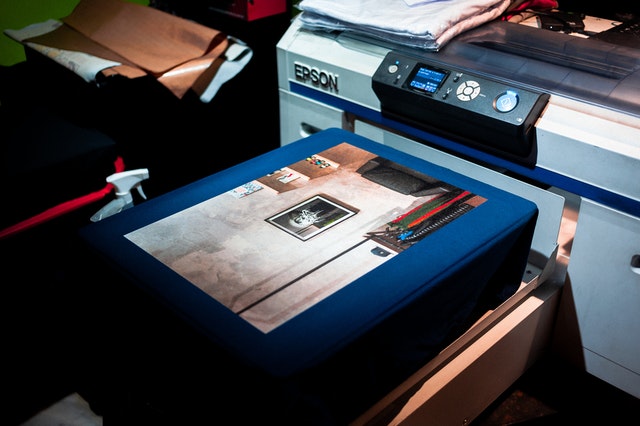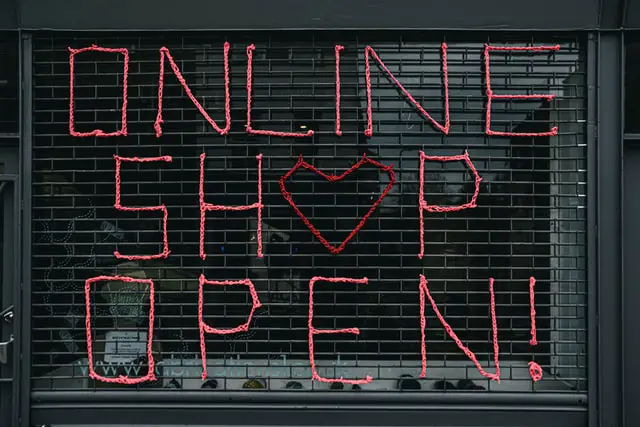It's definitely not the first time you've encountered the concept of Print-on-Demand. All these interesting and sometimes strange prints on t-shirts, backpacks, and cups are the work of the print-on-demand business model. And Shopify and Print-on-Demand is an excellent combination for growing your business from the ground up.
How Does PoD Work?
Print-on-Demand or PoD is a form of dropshipping where you don't keep a set number of items in stock, but use a readymade stock and production powers to produce (print in this case) when there's a demand for the product. In other words, it is about the ability to rapidly provide a new product right after a customer places an order on your website.
With the advent of the Print-on-Demand model, there is no more a need to store a certain amount of source material (blank, plain t-shirts, cups, plates, cases, etc.) in stock, or store any items at all. The vendor simply publishes a design on their website that can be applied to any item, and then uses the services of a selected supplier who prints the design on a specific item and sends it to the buyer.
This approach dramatically cuts the amount of time and money spent (after all, the issue of the item shortage in stock is completely eliminated) and reduces efforts to complete all items by one company, providing an opportunity to focus on collaboration.
If you're a designer looking for ways to monetize your creativity, then Print-on-Demand is definitely your cup of tea. And another great thing is, you don't have to be a professional designer, you can buy someone else's work or hire a designer and sell their designs online.
One of the most popular platforms that provide the ability to launch stores of any type is Shopify. But, does Shopify have Print-on-Demand opportunities? Yes, now let's figure out exactly what opportunities it offers.
Why Shopify is A Great eCommerce Platform for Print-on-Demand Business
Using marketplaces is much more profitable if you are making the initial attempts to enter the market. By opening your store on Shopify, you partially solve the problem of targeting, finding, and attracting potential buyers – active accounts of potential customers already exist in the dedicated pool.
But let’s take an item by item – how to do Print-on-Demand with Shopify:
- The process of creating a business from scratch usually causes the thought that it takes a long time to prepare, raise money for investments, deal with the creation of a website, spend a lot of time on contracts and formalities, etc. But it's not difficult to start your own Print-on-Demand business with Shopify. The registration and setup process takes only about 30 minutes. It does not require any serious technical knowledge, and the plans are suitable for sellers of all kinds, the platform developers have taken care of everything. You are free to design your store with a variety of theme templates, fonts, and stock photos.
- An important question that anyone who decides to open a business in this area will directly face is how much Shopify Print-on-Demand costs. This brings us to the next benefit: Shopify provides a fourteen-day free trial period during which you can fully set up the store, test the platform, and make your first sales. You will be able to pay rent for the store for only $29 per month without paying any percentage of the proceeds. This applies to the base package. But you may as well settle with another fitting Shopify price and set of features provided in other packages;
- If you have any questions about the development of the store, Shopify experts and analysts are always there and ready to advise you;
- When you think about which print vendors to choose, you can easily find a list of over 90 tested and trusted items in Shopify Print-on-Demand apps;
- In 2020, Shopify made it to the top 100 companies that managed to not only stay afloat in the harshest of times but also significantly grow. Thus, the platform was able to confidently support small and medium-sized businesses during the pandemic and reach almost $164 billion in market capitalization;
- In the Shopify Admin tab, you will be able to see various performance reports for your specific store;
- The underlying cloud capacities of Shopify eliminate site freezes and ensure stable operation without excesses.
Choose Your Print on Demand Niche
It is better to conduct some research and decide what type of prints you’d want to specialize in specifically in order to define your niche and target audience.
For example, animal prints make up a niche of its own. But here you can distinguish a sea of other niches: domestic and wild animals, reptiles, cats, dogs, rabbits, birds, etc. It is better to focus only on a part of the market and expand gradually.
By focusing on the selected market segment, you can create a portrait of a potential buyer and provide the most unique products that a representative of your target audience is more likely to buy.
This will help optimize the range and operation of the store in the most efficient way, as well as give a significant competitive edge. You will be able to avoid stereotyping and routine in your products, you will be able to have a more targeted contact with the audience and provide more personalized services.
Here are a few Print-on-Demand niches that promise to be popular in 2022 according to Google Trends: mental health, animals, books and reading, memes and funny quotes from popular movies, and prints with a green message. Don't be afraid to experiment and come up with something new.
New Trends and Predictions for Print on Demand in 2022
Once you've decided on a niche, it's time to think about how to start a Print-on-Demand on Shopify.
Set Up Your Shopify Store
The setup process and complete design of a Shopify store don’t take much time, neither does it require any special knowledge. The developers have made the interface intuitive and easy to use.
Here is a list of the steps you will need to follow:
1.1. Create and set up a Shopify account. Here you need to specify the name of your store and your business address;
1.2. Set up the domain, i.e. the URL of your store. You can use a pre-made option, come up with it yourself, or just indicate one if it already exists;
1.3. Install a theme – Shopify provides a vast range of paid and free themes out-of-the-box, but you may also customize the settings to suit your requirements and add a branded logo;
1.4. Add products to the store – everything is simple here as well – most of the product adding functionality is intuitive dragging-and-dropping;
1.5. Create and customize the main page: adding tabs “About Us”, “Privacy Policy”, “Contact Us”, and more. Similar templates are already available on the platform in the “Legal information” tab;
1.6. Outline the navigation and menus – some more drag-and-drop work that should let you customize exactly how you like it.
Filtering in Shopify: Two Ways to Create a Product Filters
This is a general instruction for creating any store on the site, now let's move on to how to turn this into an on-demand printing on Shopify store.
Find A Reliable Shopify Print Provider
You will need to choose which Shopify PoD service provider to pick as your trusted supplier. We already mentioned that the Shopify marketplace offers over 90 such providers. A number of companies that work without being tied to Shopify are also added to this list. So how do you decide?

Quality
The first thing you should pay attention to is the quality of the services provided. Here you can go in different ways: analyze reviews about this supplier or order samples on different materials from several companies of your choice to test and compare which option suits you best.
Portfolio
One of the major things to check as well is products in the potential supplier’s portfolio. Maybe they only specialize in cups and kitchen utensils, and they won't be able to print your design on T-shirts? Even if it suits you now, would it be convenient to look for another print service provider when you decide to expand the range in your store? The least expensive and easiest option would be to find a company that won't get in the way of scaling.
Shipping costs
You should check whether the supplier company ships products to the point in the world where your target audience is concentrated. This reflects on the shipping rates you will be offered. There are many companies that deliver across all corners of the world, but you should align all the underlying costs in order to achieve the most fitting conditions.
It's also worth mentioning here that every Print-on-Demand provider has its own shipping methods: some start the job right away and pack and deliver the product themselves while others use the services of packaging and delivery networks. The latter option spawns extra costs and will definitely not become a favorable factor in the development of your business.
Integration
And the last thing is the integration of the supplier’s app or plugin with your store. Efficiently combining supplier software and your Print-on-Demand in Shopify, you make it much easier to manage sales and control the processes associated with dropshipping.
Great, flexible integration opportunities are provided by some of the best Shopify Print-on-Demand companies in the field, including Printful, Printify, Lulu Xpress, Gotten, Print Aura, Teelaunch, Printy6, JetPrint, CustomCat, Pixels, Fuel, and PodZa…






